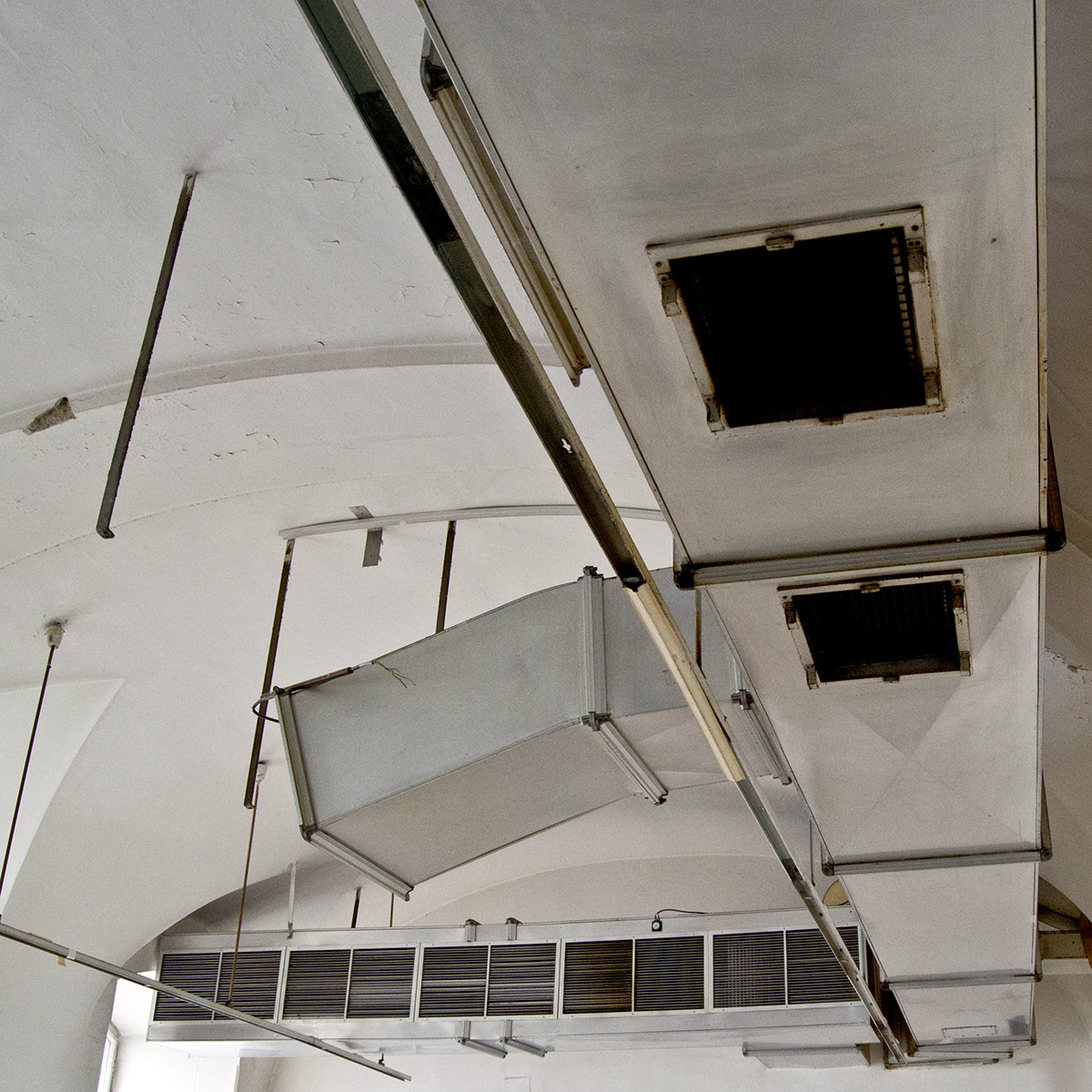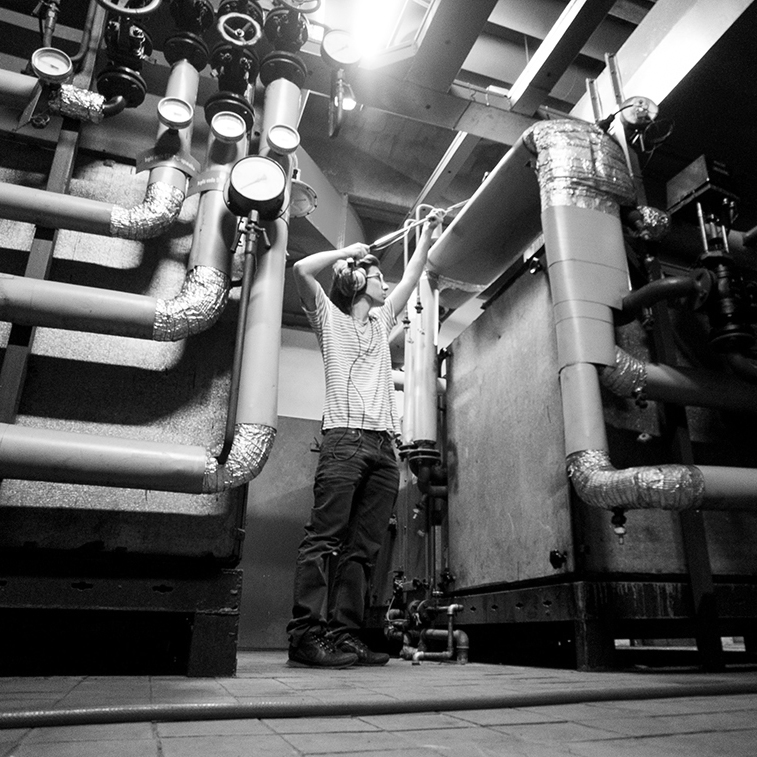
Jonáš Gruska, Vzduchotechnika
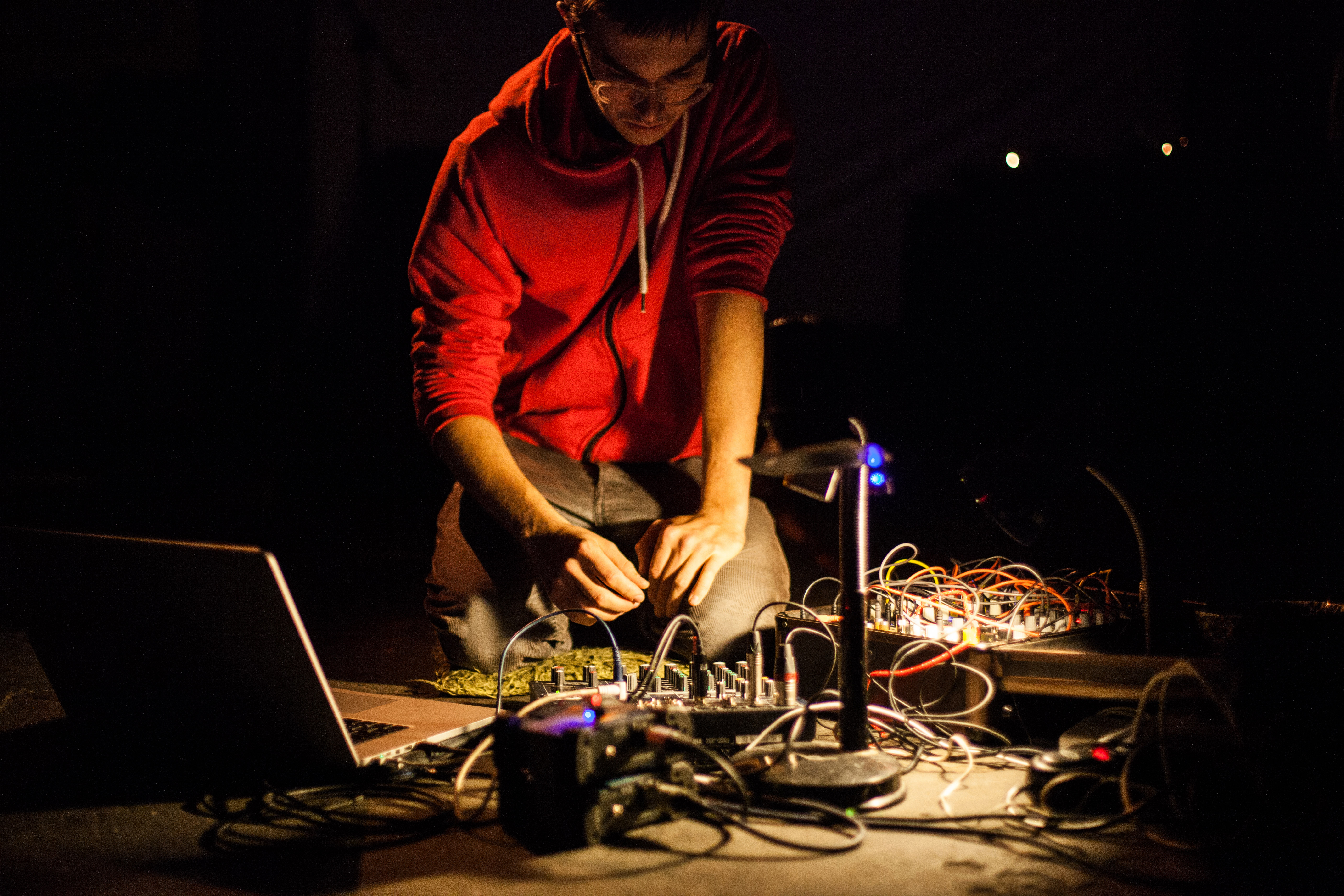
Jonáš Gruska. Photo by Gabriela Zigova
When Jonáš Gruska is not busy giving workshops on urban sonification, creating his own recording instruments, rehearsing with orchestras, making electromagnetic fields audible, producing compositions for an unused metallic door, or organizing a solar-powered (experimental) music festival called ZVUK, you’ll find him under bridges, inside bridges, in ventilation systems or near oil refineries exploring the surprising psychoacoustic properties of spaces and materials we might otherwise ignore.
If all these activities and achievements were not enough, the artist has also set up LOM, a music label for East/Central European experimental art and music.
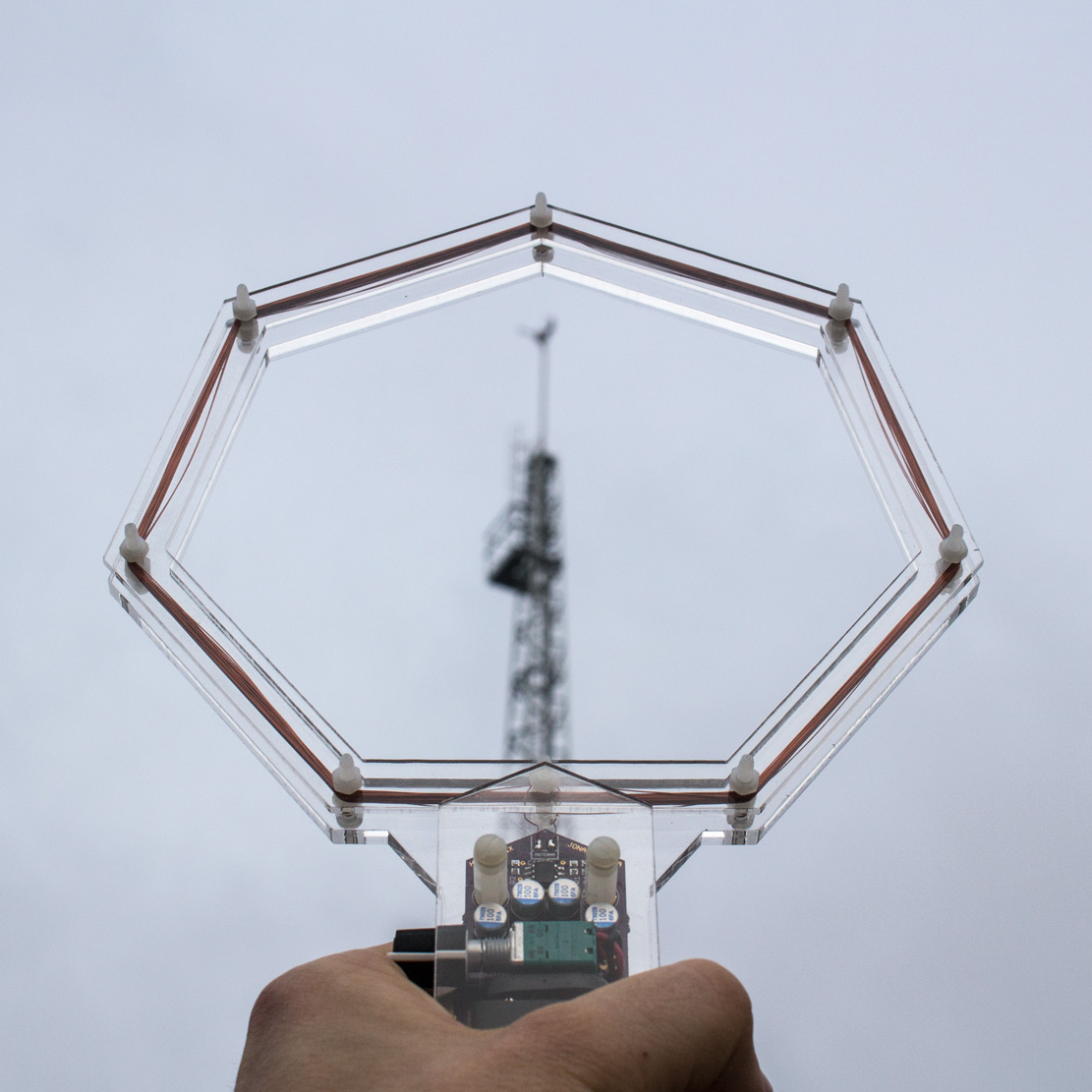
Prototype instrument developed by the artist. Photo by Jonáš Gruska
Gruska was born in Czechoslovakia, he studied at the Institute of Sonology in The Hague and at the Music Academy in Kraków. This year, he is one of the super talented artists supported by SHAPE, a European platform that aims to promote innovative musicians and interdisciplinary artists with an interest in sound. I caught up with the sound prodigy over email a few days ago:
Hi Jonas! Your bio page says that one of your main focus are chaotic rhythms. These two terms are not often put together. Could you tell us what you mean by chaotic rhythms and also give some examples of it?
We’re surrounded by rhythms all the time – banging of the rain on the metallic roof, repetitive dripping of liquids in the fridge mechanism or just simple footsteps of a person in the apartment above. None of these rhythms can be defined in the terms of classic tempo notation, but we still sometimes feel their groove and they can strike our imagination or musical taste/ pattern recognition in interesting ways. The unpredictability is chaos, yet the time separated serie of “clicks” is a rhythm.
Site Specific Resonances V., a site-specific sound installation located in an abandoned post office building in Vienna, used a ventilation system as if it were a speaker. Could you describe us how you manage to ‘extract’ so many different sounds from something that looks as ‘boring’ and simple as a ventilation system?
Metallic constructions are fascinating to me because they resonate a lot, in many interesting ways. It is usually the weak points of the construction which moan and squeal the most. I love finding and exploiting these imperfections – I compose for them on the spot, treating them as very special instruments. Usually it is enough to play pure, simple sine wave through the system at very exact frequency and the whole thing starts to rattle and click, resonate. Basic input, beautifully complex output.
Jonáš Gruska, Kolokoly, 2013. Performance for bells at Kamenné square, Bratislava, Slovakia
You’ve created several works for specific places and each of them seems to either highlight or even modify the atmosphere of the places you engaged with. How do you select these places?
These places usually select me. I am being invited to create works and so far I have been very lucky and always found a way to interact with the site. I carry my custom “sound installation suitcase” assembled over last few years and it allows me to be very flexible with what I create.
Generally I believe it is next to impossible to make sound installations without caring about the site, since there is no standard of a sonic “white wall gallery”. I personally cannot imagine creating a installation which is not site-specific.
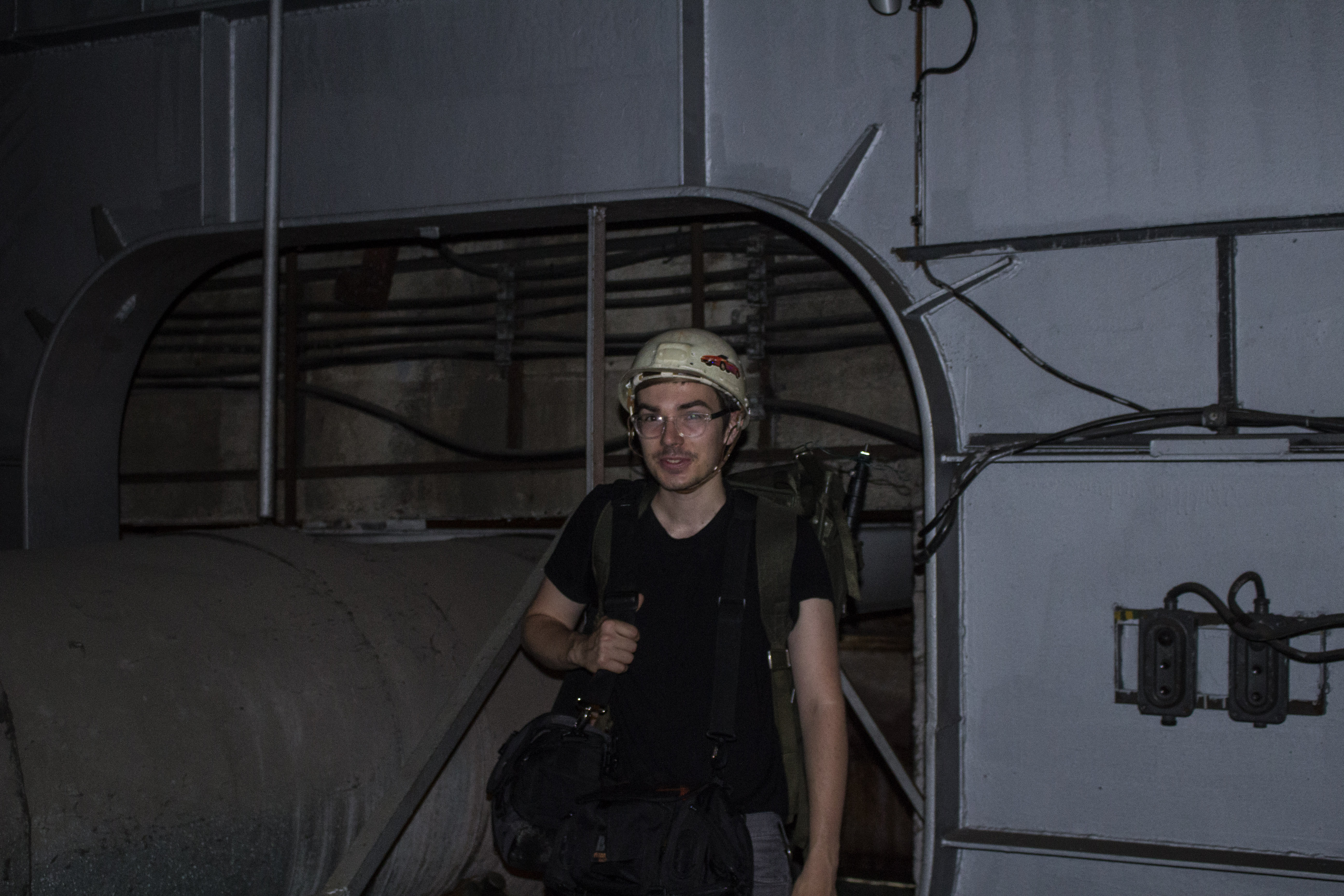
Inside a bridge in Bradislava. Photo by Angakok Thoth
And are there any dream locations you’d like to get access to in order to create new sound installations/recordings?
Recently I’ve been blessed with a permit to record inside one of the old soviet bridges in Bratislava, Slovakia. The recordings will be part of my “bridge” album which I am assembling.
One of my dreams is to record various slovak caves, but it is quite hard to get there alone and in silence (since every little noise gets drastically amplified, it is quite difficult to achieve good recording conditions in nonsolitary groups).
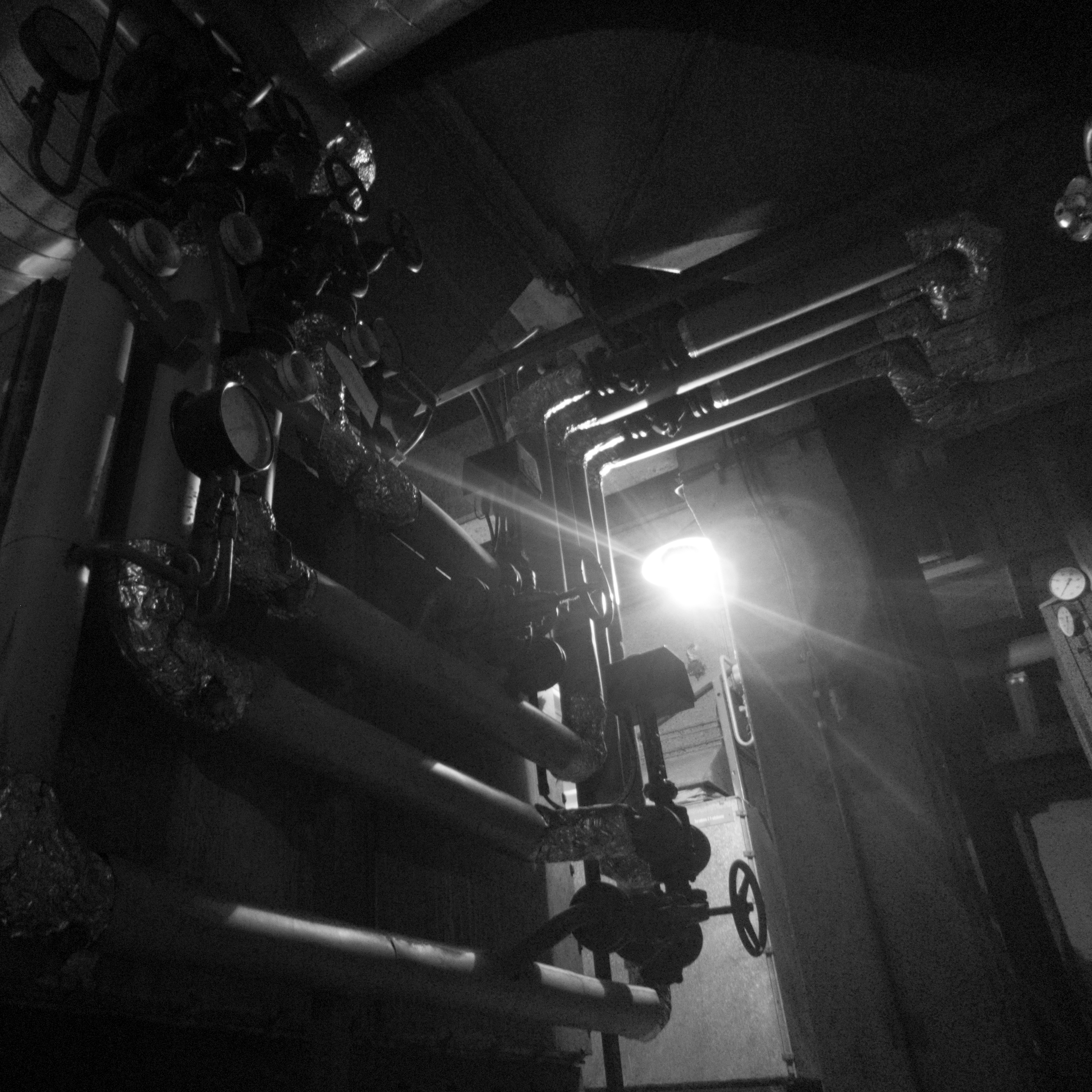
Vzduchotechnika. Photo by Jonas Gruska
Jonáš Gruska, Vzduchotechnika (teaser)
I like “Vzduchotechnika” a lot. The series of field recordings was taken from publicly inaccessible ventilation system machinery. How did you get access to it? Does the history of the place translates into the recordings?
At the time I was preparing a site-specific performance using the outer part of the ventilation – huge tubes at the side of the building, similar to the ones next to Centre Georges Pompidou in Paris. The facilitators of the whole thing pointed out that the “innards” might be just as interesting… So I packed my recording gear and spent several hours surrounded by huge ventilation machinery. At the first glance it sounded quite dull, but upon closer examination I discovered that the place is full of small rhythms, squeals and squeaks. And I really love those. I wouldn’t say there is anything more behind it – it is just a collection of very cute and peculiar sounds, from a seemingly boring place.
I’m also curious about the sound recordings and the way you work with them. How do you decide how/when you need to modify the existing sound and when you need to keep them raw?
Generally most of my public field recording works are 90 to 100% raw, I rarely do any heavy equalization or compression. I generally try to record only when I am really happy with the sound already on the spot and don’t think about postprocessing. Obviously, it involves a lot of trying and listening, and usually takes a lot of time.
Something i noticed is that you seem to select places that are also visually interesting. Is this deliberate? Is the visual component of a space an important element of each work?
It is mostly accidental… I was lucky. My primary focus is sound.
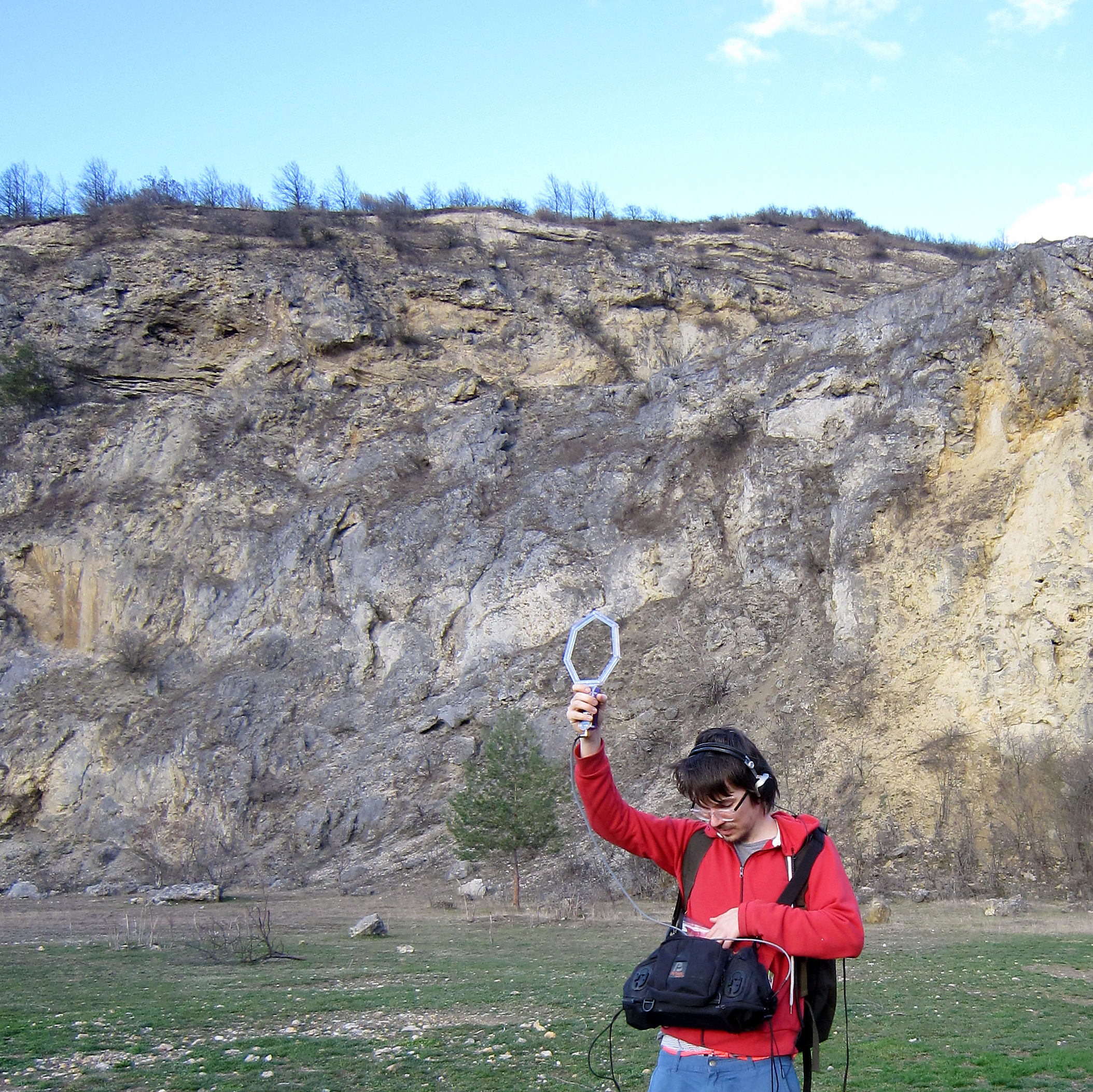
Testing a prototype device. Photo by Acidmilk
You also make your own music instruments and microphones. Why did you feel there was a need to develop more instruments and microphones? What do they enable you to achieve that you wouldn’t be able to achieve with already existing instruments?
In the beginning it was mostly about limited resources. I was working on a budget, yet had a nerdy desire to do recordings with as little noise as possible and high fidelity. So I looked into DIY solutions for field recordists, and realized it can be actually quite interesting.
Since I was able to make affordable, good sounding mics, I was also less afraid to experiment. Like when I found a hole in the ground, I wasn’t afraid to drop my mic in it, even though I had no idea what sort of environement will it be confronted with.
Having a replacable mic helps a lot when you feel like trying new things. I even did a short piece where the mic is hidden in a croissant and it is being “uncovered” by pigeons – I would be quite scared to do that with expensive microphone.
Jonáš Gruska, Holuby, 2015. How it sounds to be eaten when you are a bread roll
Secondly, the market is surprisingly still quite limited when it comes to the field recording I am after. And the same goes for instruments, none of the available solutions didn’t really satisfy me or match my style of work. For my musical performances, I program my own synthesizers in languages such as Supercollider or Max, because there is nothing ready-made I could use. It is a lot of work, but liberating. And somewhat more satisfying.
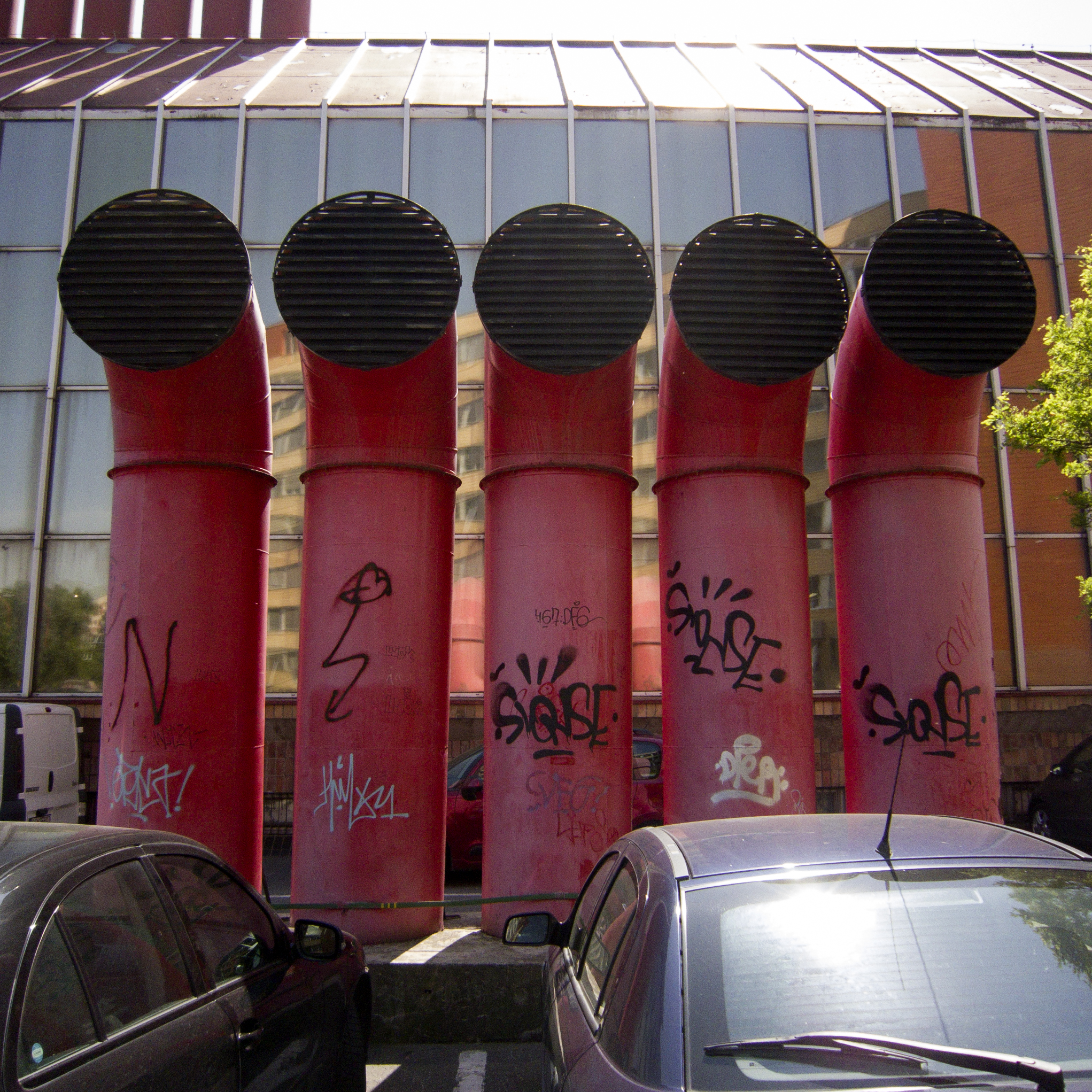
Rúry, 2014. Photo by Jonas Gruska
Jonáš Gruska, Rúry, 2014
Rúry seemed to draw in a crowd of fascinated and curious passersby. Could you tell us about the reaction of the public to this piece and to your site-specific work in general?
Rúry is actually piece from the other side of Vzduchotechnika – the tubes are the other end of the ventillation machinery I was recording.
Generally the audience is full of people which know what they are up for, or at least they can guess. People are generally perplexed by the new context created… sometimes annoyed as well. The other day I did a live performance in a trolleybus in Bratislava. It consisted of me carrying a huge speakers on my back and doing live sonification of the trolleybus electromagnetic fields. The sounds were quite intense and there were moments when I confronted unsuspicious audience – some of the people were shocked, some were laughing, some were complaining but generally people loved it. It just broke their usual perception of the vehicle and how a sound performance can be done. And I love breaking stereotypes and creating new, challenging situations.
Do you feel that people understand and appreciate sound art as much as visual art?
I think it is slowly coming there. There is a slight overlap with the people appreciating visual art, but generally it seems like a completely different world.
I quite like the raise of ASMR art on youtube. It isn’t exactly good art (in my opinion), but bring a lot of focus on sound, time and sound quality. It feels refreshing.
I don’t know much about the contemporary art scene in Slovakia unfortunately. Are there artists and musicians whose work you’d recommend us to look at? Whether they work with computers and electronics like you or not.
I would recommend checking labels such as Exitab and Proto sites. Some interesting stuff going on there, slightly less experimental then the label I am involved with, LOM (which is obviously also worth checking out!). My most favorite Slovak band is probably Amen Tma, which is an incredible psychedelic polyrhythmic techno.
Any upcoming project, field of research or event you could share with us?
Currently I am on a residency in Czech Republic, recording sounds of contemporary village. With all the noise pollution there is. Later this year I will be finishing a field recording album of the Bratislava’s bridges and my music album “Spevy”. In the meantime probably developing some new electromagnetic devices… Lot of plans!
Thanks Jonas!
Check out this other interview with a SHAPE artist: Tanks, drones, rockets and other sound machines. An interview with Nik Nowak.

